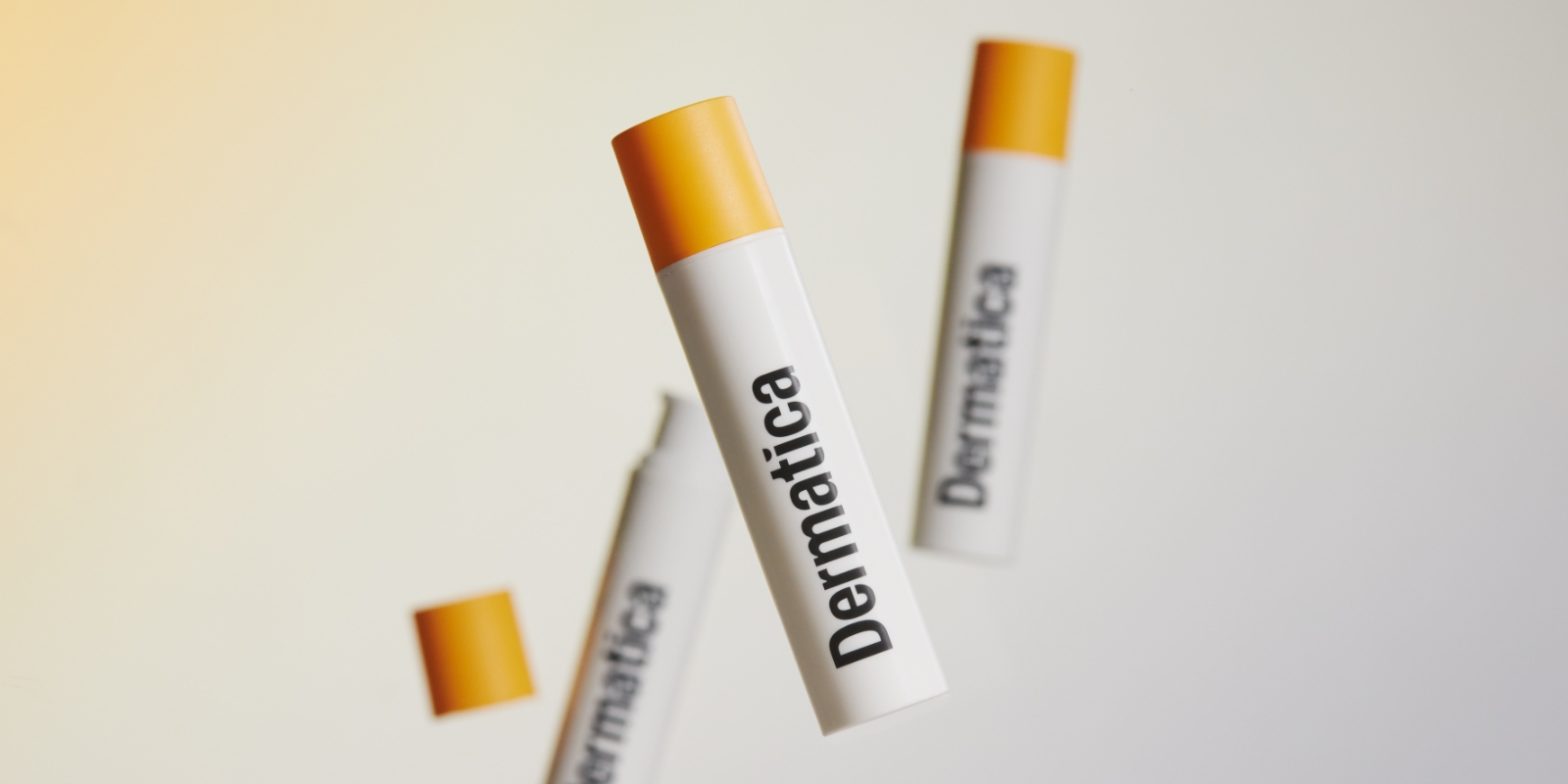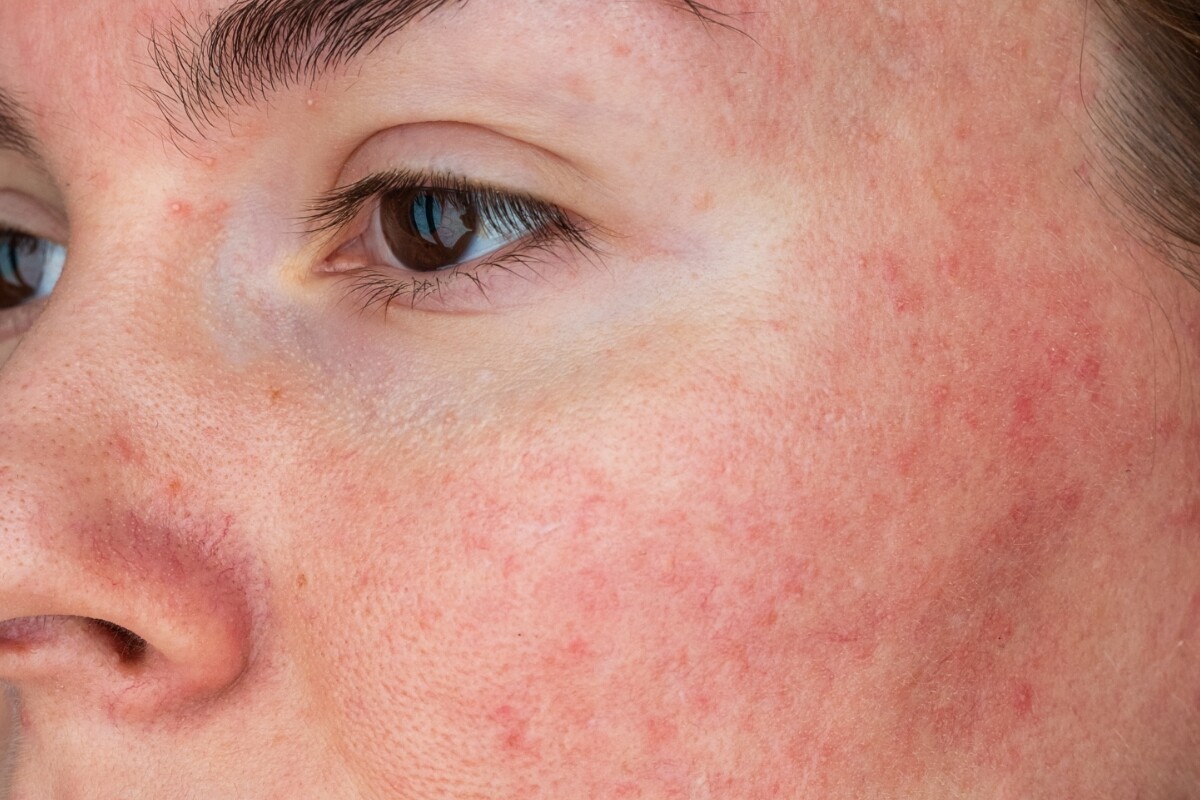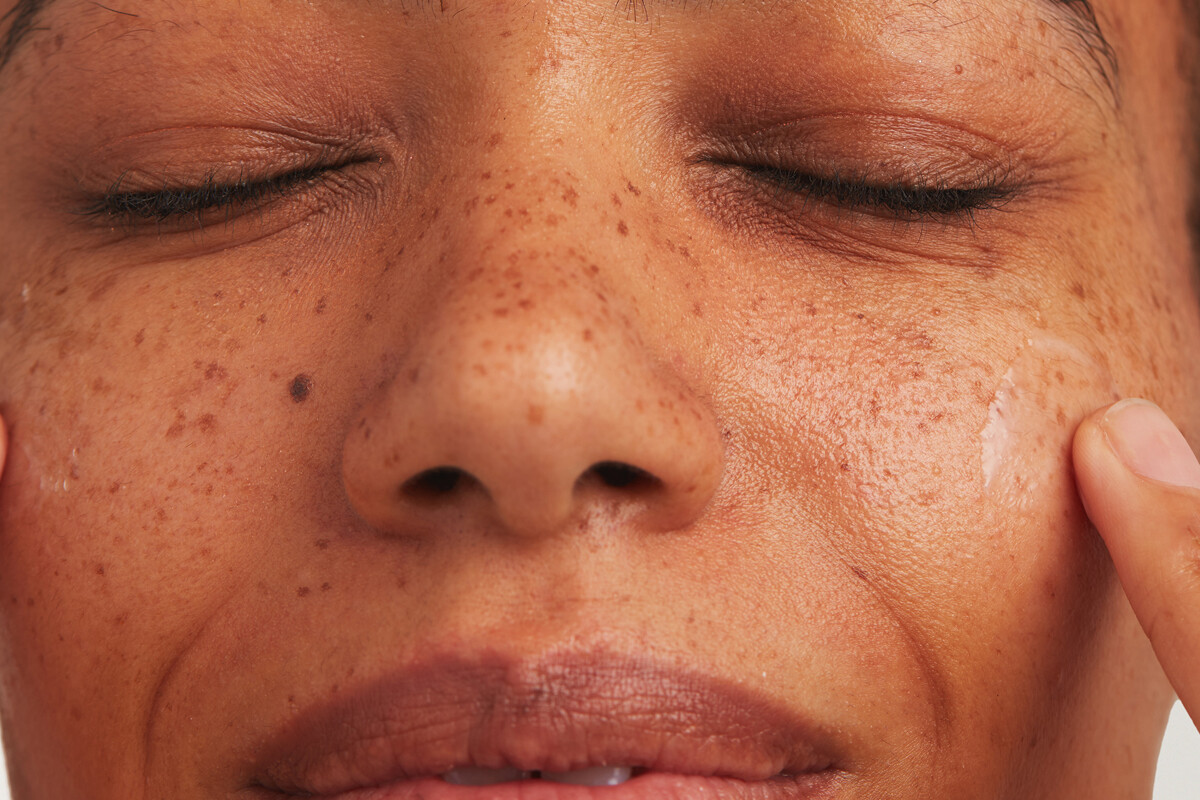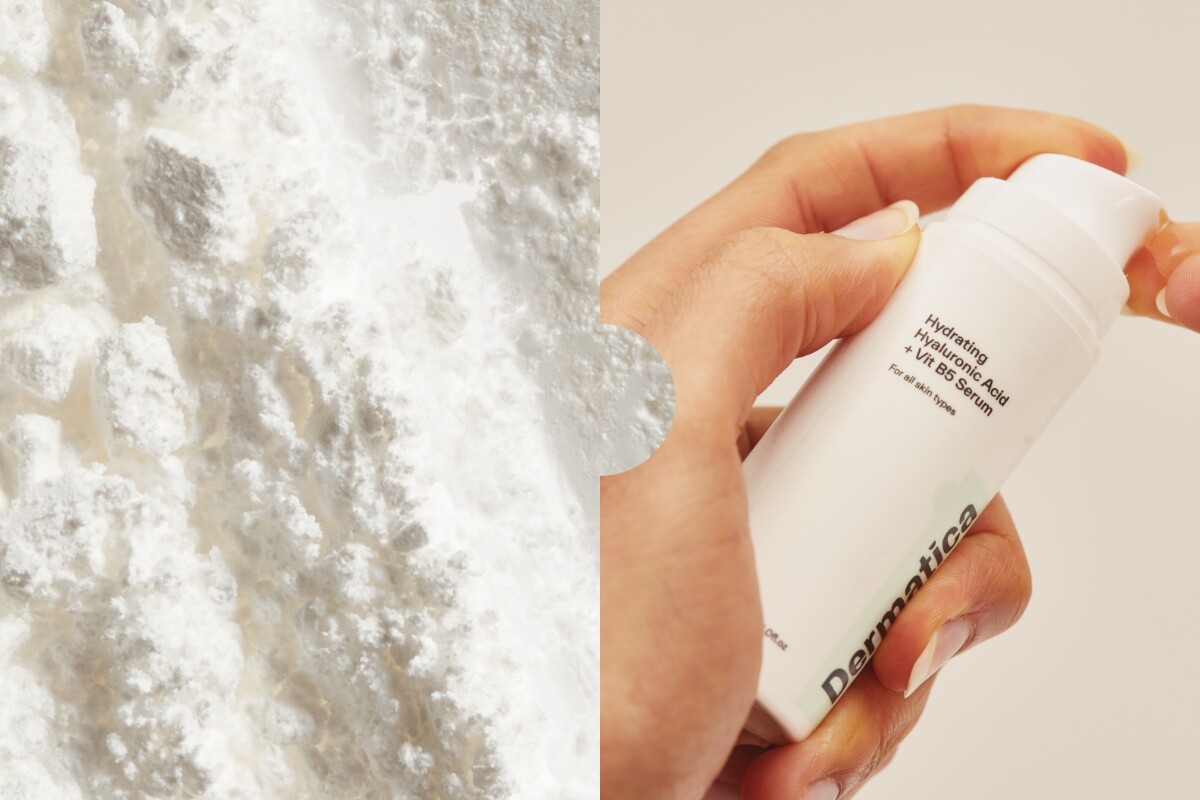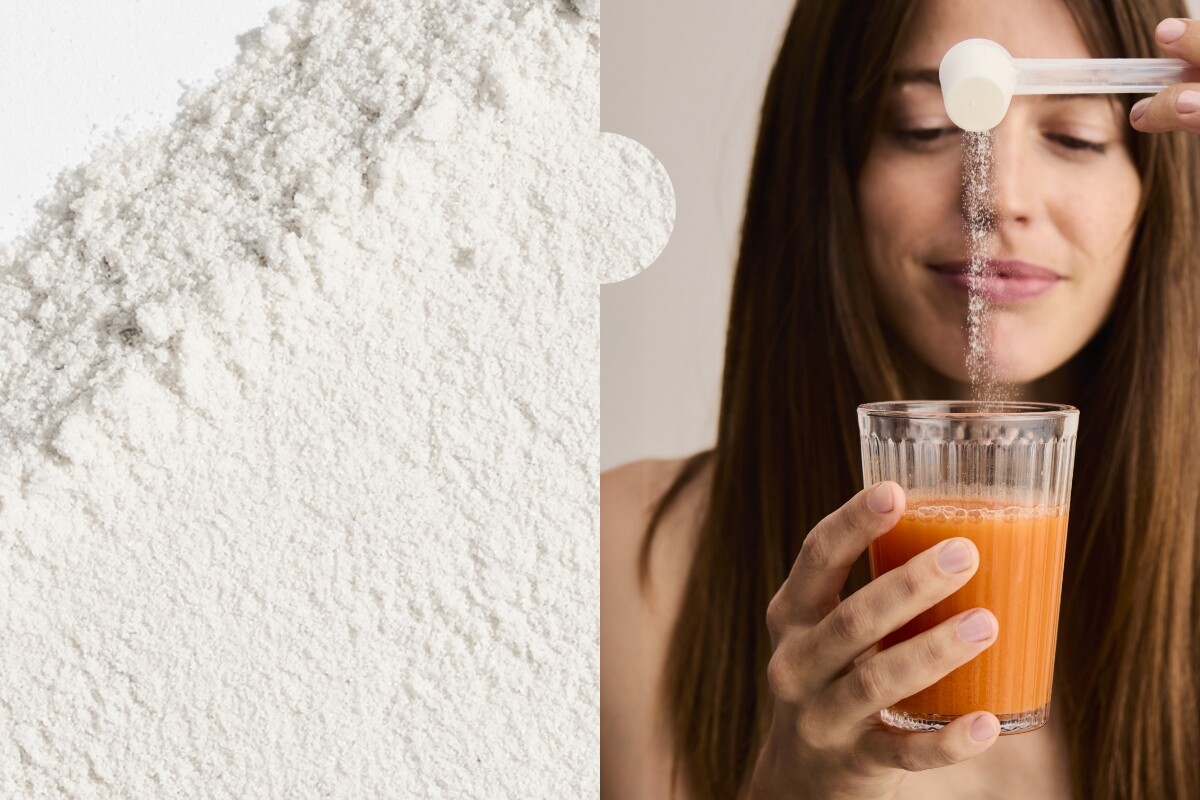At Dermatica, our dermatology experts recommend Vitamin C to many of our customers and subscribers. And we’re not alone, it’s by far a favourite antioxidant among dermatologists because of what it does for the skin – there are heaps of benefits.
So, in answer to the question, yes it is. But before you go, do you want to know how Vitamin C works in your skincare? If you’re researching a little deeper into this active ingredient, we’ll explain some basic science behind how it works. Plus, keep scrolling for some tips on how to add this fantastic ingredient to your skincare routine – without wasting any of it.
What is Vitamin C?
Vitamin C is an essential vitamin, which means our bodies can’t make it naturally on its own. It helps keep your body and skin healthy, but you need to get it from food, skincare products or supplements. (1)
Vitamin C Benefits
There are lots of reasons why our dermatologists and formulation scientists recommend it. Here are two of the biggest benefits of topical (applied to the skin) Vitamin C.
It Boosts The Protection Of Your Sunscreen
Many studies have shown that when you use Vitamin C underneath your sunscreen, your skin is getting more protection than just using sunscreen on its own. Not just against UV radiation, but from pollution and visible light too – which can all speed up how quickly our skin ages. (2)
Expert advice: Vitamin C doesn’t contain any UV filters, so it won’t shield your skin from UV damage if you use it on its own. It must be used with broad-spectrum sunscreen to get those protective benefits we mentioned above.
It Can Help Prevent Fine Lines & Dark Spots
Vitamin C can boost collagen production in your skin, and collagen is the protein in your skin that gives it elasticity, volume and moisture. Vitamin C also brightens your overall complexion, making it glow and fading dark spots from old acne spots, sun damage, discolouration and other forms of hyperpigmentation. (3)
A Look Into The Different Types Of Vitamin C
There are many forms of Vitamin C. L-Ascorbic acid (L-AA) is the active form. It’s the most potent, which is why it’s in our Vitamin C 15%: Fresh Batch Ascorbic Acid, and has decades of research to support the skin benefits we’ve already said above. It’s also the most unstable and can oxidise quickly when it’s exposed to light, air and heat.
There are other inactive forms of Vitamin C that are used in skincare products. However, there aren’t as many studies to prove how well these ones absorb or convert to L-Ascorbic acid (the active form). They include:
– Magnesium & sodium ascorbyl phosphate
– Ascorbyl glucoside
– Ethyl ascorbic acid
– Tetrahexyldecyl ascorbate (THD) (3)
How To Help Stabilise L-Ascorbic Acid
Formulating L-Ascorbic acid with other antioxidants helps to stabilise it and increase how effective its antioxidant properties are. The most well-known combination is Vitamin C, Vitamin E and ferulic acid.
Combining L-AA with Vitamin E and ferulic acid can make it more stable and even double its effectiveness. This trio is the gold standard formulation behind our Vitamin C 15%: Fresh Batch Ascorbic Acid, which Dermatica designed with dermatologists for every skin type. No matter how old you are, it’s worth adding this to your morning routine if it’s suitable for your skin type. It will provide lots of long-term benefits to your skin’s overall health and appearance. (4)
Benefits Of Vitamin C, Vitamin E & Ferulic Acid
Not only do our experts love this powerful combination, it’s also been researched the most. The studies have even shown that it helps significantly lower how likely your skin is to get sunburn, compared to placebo.
What’s more, the antioxidants can help minimise DNA damage. They do this through that extra boost in collagen production we mentioned, which can even help speed up how fast your wounds heal after clinical procedures like fractional lasering. And if that wasn’t enough, this trio’s brightening properties also help reduce the likelihood of dark spots, also known as post-inflammatory hyperpigmentation. (5)
Choosing The Right Concentration
When it comes to using L-Ascorbic acid, the percent you choose definitely matters – stronger isn’t always better. At Dermatica, our dermatology experts recommend choosing a product that has 10-20% L-Ascorbic acid – that’s the sweet spot. Any concentration of L-Ascorbic acid over 20% can be irritating and doesn’t provide many more benefits for most people. (6)
Can You Use Retinoids or Retinol With Vitamin C?
Absolutely. However, they are both actives, so to keep your skin barrier from becoming irritated, use retinoids like tretinoin, adapalene or retinol at night, and reserve your Vitamin C product for the morning before sunscreen. (7)
Can You Use Vitamin C With Niacinamide?
Yes, it’s safe to use Vitamin C with niacinamide in your skincare routine. These two antioxidants are both known for their brightening properties. In fact, some products are even formulated with these two ingredients together. (8)
Can You Use Vitamin C With AHAs or BHAs?
Yes, but do it with caution – this combination won’t work for everyone. These ingredients are all active and acidic, so go slowly, follow the directions for each product carefully and keep a close eye on how your skin reacts when you use them together. For some people, it will be fine.
If you notice any irritation like redness (if you have light to medium skin), swelling, pain, stinging or breakouts, either use them on different days, or remove one or more of the products from your routine altogether. (9)
Are you a Dermatica subscriber? Reach out to one of our friendly dermatology experts from your dashboard if you’d like personalised advice on your skin, or any products you’re using.
How To Tell If Your Vitamin C Product Has Expired
If your product starts clear or white in colour and starts turning yellow, it has started to oxidise and the ingredients won’t work as well as they did when you first opened your product. When your Vitamin C product has turned orange or brown in colour, and has a strong smell that’s similar to hot dogs, it’s expired and you should throw it away. (3)
How Long Does It Take To See Results?
If you use your Vitamin C product daily, our customer data has shown that it can take about 6-8 weeks to see results. Be patient and stay consistent, the results will be worth it! (10)
Where To Keep Your Vitamin C Product (Storage Instructions)
As we said above, L-Ascorbic acid is incredibly sensitive to light, air and heat. To maintain your product’s freshness (and get your money’s worth), you’ll want to store it away from direct sunlight. Instead of keeping it in your bathroom where it can get hot and steamy, put it in a dark, cool, dry cupboard.
Tempted to give this ingredient a try?
A smart choice would be to find a product that’s packaged in an opaque, airtight container, like Vitamin C 15%: Fresh Batch Ascorbic Acid. Our booster is also made fresh in small batches, and designed to be used daily for one month. We’ve even done clinical tests to make sure all those powerful active ingredients work at their best from the first day you use it, until the end of that monthly period.
Our formulation experts have chosen to provide it at 15% potency – just the right amount to make a significant difference while reducing the risk of irritation on your skin. Plus, if you’re a subscriber, you’ll enjoy 20% off when you add it to your subscription.
For more information about the treatments we offer, visit our website.
References
1. Abdullah M, Jamil RT, Attia FN. Vitamin C (Ascorbic Acid) [Internet]. PubMed. Treasure Island (FL): StatPearls Publishing; 2022. Available from: https://www.ncbi.nlm.nih.gov/books/NBK499877/
2. Darr D, Dunston S, Faust H, Pinnell S. Effectiveness of antioxidants (vitamin C and E) with and without sunscreens as topical photoprotectants. Acta Dermato-Venereologica [Internet]. 1996;76(4):264–8. Available from: https://pubmed.ncbi.nlm.nih.gov/8869680/
3. Telang PS. Vitamin C in dermatology. Indian Dermatology Online Journal [Internet]. 2013;4(2):143. Available from: https://www.ncbi.nlm.nih.gov/pmc/articles/PMC3673383/
4. Lin FH, Lin JY, Gupta RD, Tournas JA, Burch JA, Angelica Selim M, et al. Ferulic Acid Stabilizes a Solution of Vitamins C and E and Doubles its Photoprotection of Skin. Journal of Investigative Dermatology. 2005 Oct;125(4):826–32.
5. Chen L, Dong Y, Liu L, Zhu M, Qin X. Achieving the maximum efficacy by combining non‐ablative fractional laser with vitamin C, vitamin E and ferulic acid serum for skin quality improvement in Asian population. Journal of Cosmetic Dermatology. 2024 Jan 26;23(5):1592–6.
6. Al-Niaimi F, Chiang NYZ. Topical Vitamin C and the Skin: Mechanisms of Action and Clinical Applications. The Journal of clinical and aesthetic dermatology [Internet]. 2017;10(7):14–7. Available from: https://www.ncbi.nlm.nih.gov/pmc/articles/PMC5605218/
7. Hore TA, von Meyenn F, Ravichandran M, Bachman M, Ficz G, Oxley D, et al. Retinol and ascorbate drive erasure of epigenetic memory and enhance reprogramming to naïve pluripotency by complementary mechanisms. Proceedings of the National Academy of Sciences. 2016 Oct 11;113(43):12202–7.
8. Park HJ, Byun KA, Oh S, Kim HM, Chung MS, Son KH, et al. The Combination of Niacinamide, Vitamin C, and PDRN Mitigates Melanogenesis by Modulating Nicotinamide Nucleotide Transhydrogenase. Molecules. 2022 Aug 2;27(15):4923.
9. Șoimița Emiliana Măgerușan, Hancu G, Rusu A. A Comprehensive Bibliographic Review Concerning the Efficacy of Organic Acids for Chemical Peels Treating Acne Vulgaris. Molecules. 2023 Oct 22;28(20):7219–9.
10. Pullar JM, Carr AC, Vissers MCM. The Roles of Vitamin C in Skin Health. Nutrients [Internet]. 2017 Aug 12;9(8):866. Available from: https://www.ncbi.nlm.nih.gov/pmc/articles/PMC5579659/
Ash Sharma
Dr Ashwin Sharma is a medical doctor and writer with a particular interest in health technology, artificial intelligence and medical weight loss. He completed his training at the University of Leicester and Imperial College London, and has since been exploring the intersections of medicine, technology, and communication.

